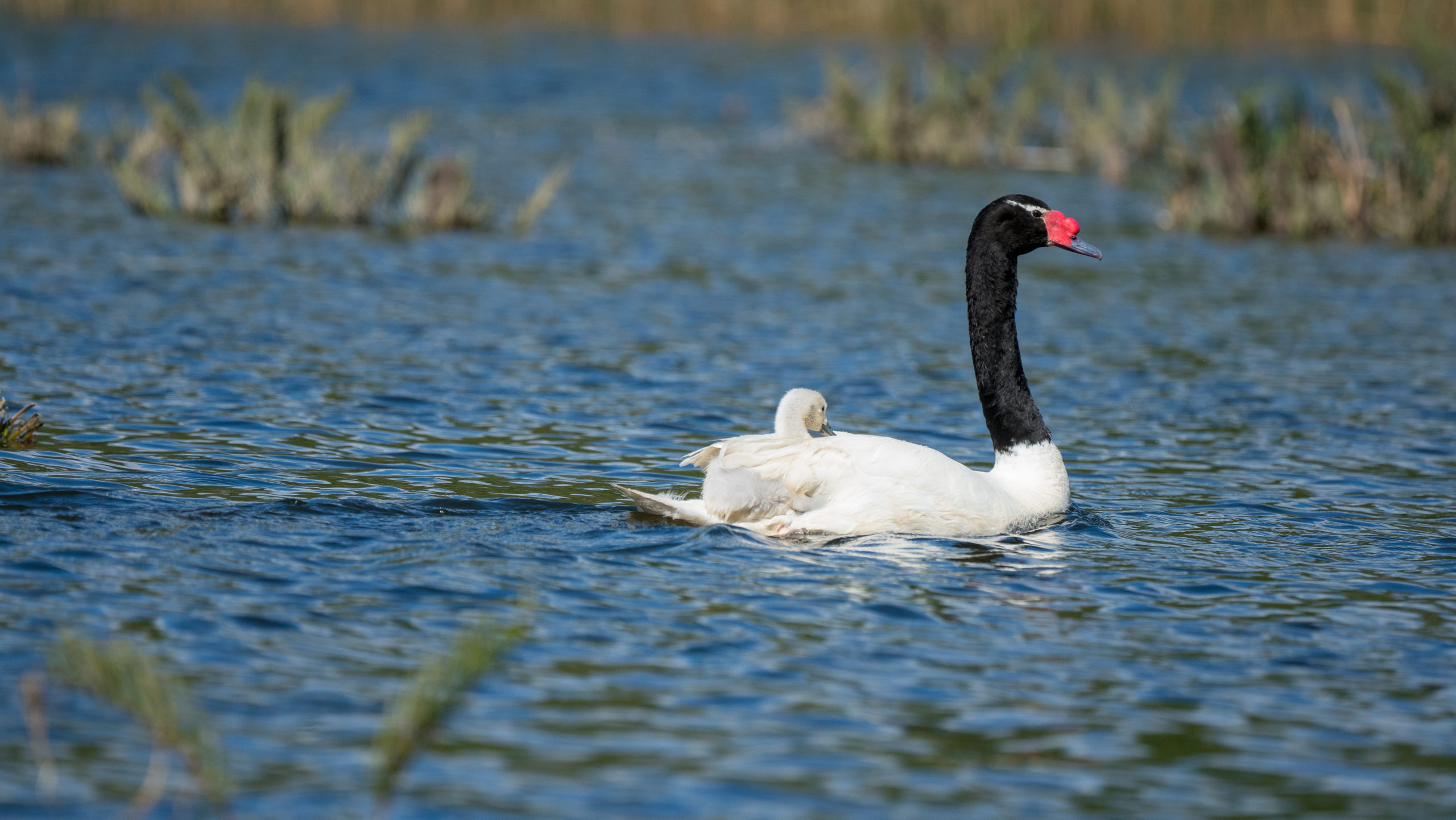By George Swan
Linked paper: Pinniped predation of birds: A cause for conservation concern? by G.J.F. Swan, E.A. Silva-Rodríguez, L.P. Osman, and E. Jaramillo, The Condor: Ornithological Applications.
When hungry sea lions started using an internationally important wetland in Chile like an all-you-can-eat swan buffet, local authorities were taken by surprise. However, a review of the literature on pinniped-bird interactions was able to shed some light on the ecology of this predator-prey relationship and the pros and cons of potential management actions.
Valdivia, in southern Chile, is known for two charismatic species: the South American sea lion and the Black-necked Swan. A non-breeding colony of approximately 30 sea lions has established itself along the river in the center of the city and become something of a tourist attraction, while the surrounding rivers and wetlands support the largest breeding population of Black-necked Swans in the world. Until recently, the two species existed side by side with little to report.

This changed in July 2018, however, when rangers in the wetland began observing a sub-adult male sea lion catching and eating swans. It was initially dismissed as a curiosity, but more sea lions began displaying the behavior and counts of swan carcasses quickly increased to over 100 per month, creating much public interest and media attention. This presented a management conundrum for local authorities who had little information to inform their response.
It was at this point that my co-authors and I decided that a broader exploration of bird predation by pinnipeds (seals, fur seals, sea lions, and walruses) would be valuable in informing this situation and others like it. Our Perspective, published in The Condor: Ornithological Applications, asks three questions: first, what is known about the ecology of pinniped predation of birds? Second, should it concern those responsible for bird conservation? And finally, is there anything that can be done to mitigate it if necessary?
Although sea lions eating swans in Chile is apparently novel, we found studies from all over the world reporting pinniped predation of many different bird species including penguins, ducks, and albatrosses. Interestingly, several ecological aspects of this predator-prey interaction make it fairly distinctive. First, birds are generally only a very small fraction of pinniped diet at a population level, but there may be a small proportion of animals — most commonly sub-adult males — that regularly prey upon birds. Second, it appears that once one animal has developed such a foraging specialization, it can be socially transmitted to others. Third, because birds often have inappropriate or ineffective anti-predator responses to pinnipeds, mortality can be high, especially around breeding colonies. As a consequence, pinniped predation can pose a threat to the viability of bird populations, especially those that have already been reduced or fragmented by human activities.

For those contemplating mitigation options, however, the science was less clear and most potential strategies had both pros and cons. For example, live-trapping wild pinnipeds can cause high mortality, and translocated animals may simply return. Killing only those pinnipeds that have developed bird-specific foraging specializations, although not always socially or ecologically appropriate, can reduce or even stop predation. However, the efficacy of this strategy appears to depend on the number of animals displaying the behaviour and the benefits may be short-lived.
Back in Chile, there is still uncertainty surrounding the correct course of action in the ongoing (and apparently increasing) predatory interactions between sea lions and swans. Indeed, as we report in the Perspective, within our authorship we are split as to whether or not the authorities should remove the “problem” sea lions. For now it looks like the swan population is able to accommodate current losses, but there are examples from elsewhere of pinniped predation eventually imperilling the viability of even large bird colonies. Continued monitoring of both predation rates and swan population trends will be important to inform management in the future.
